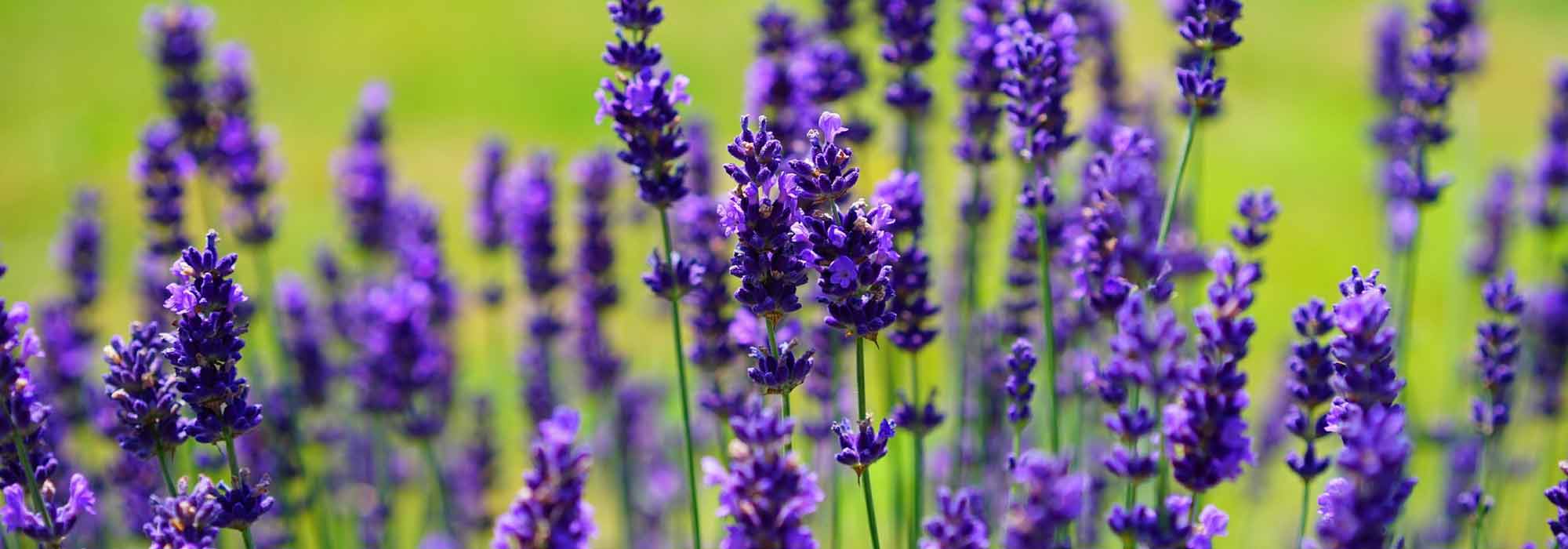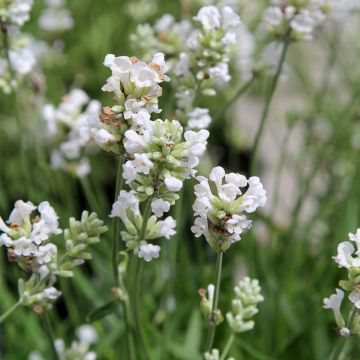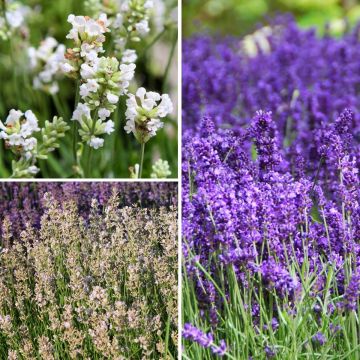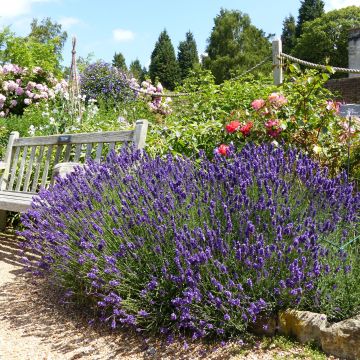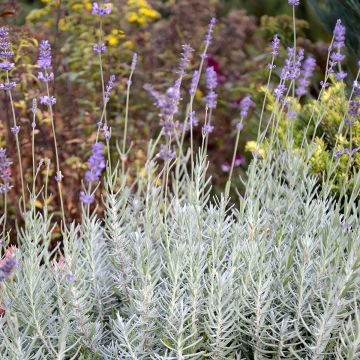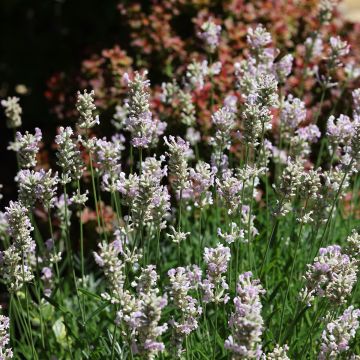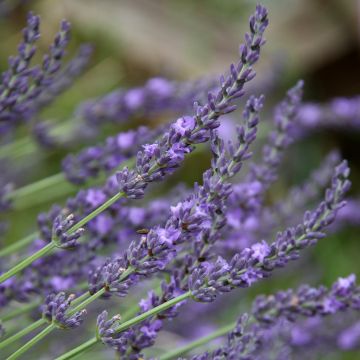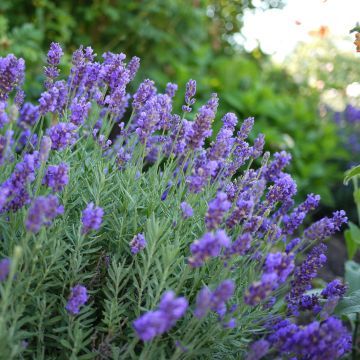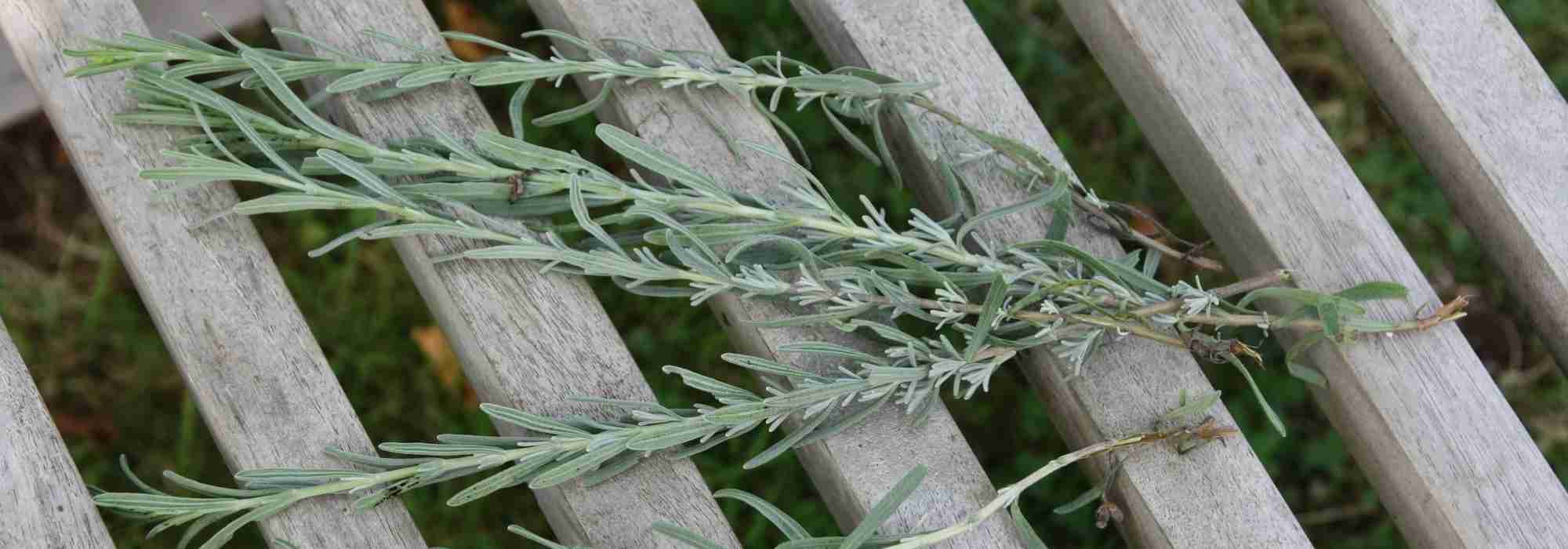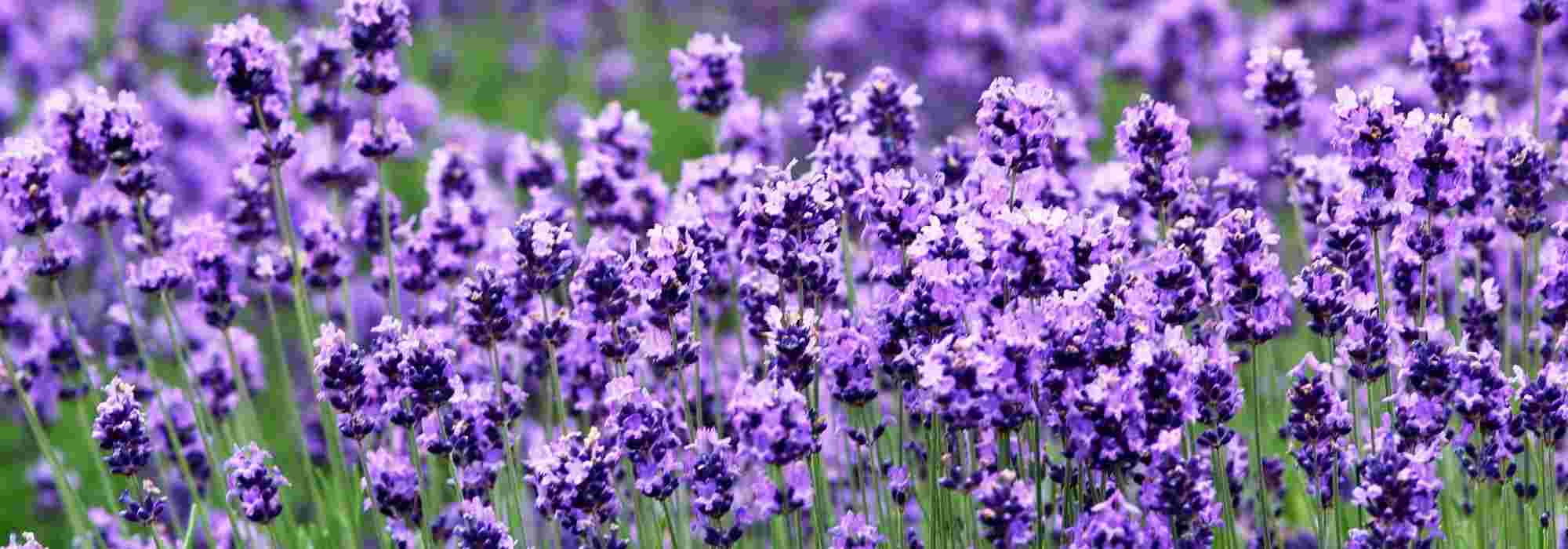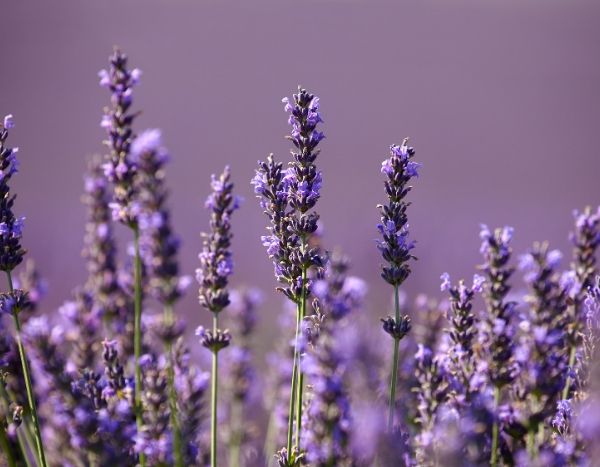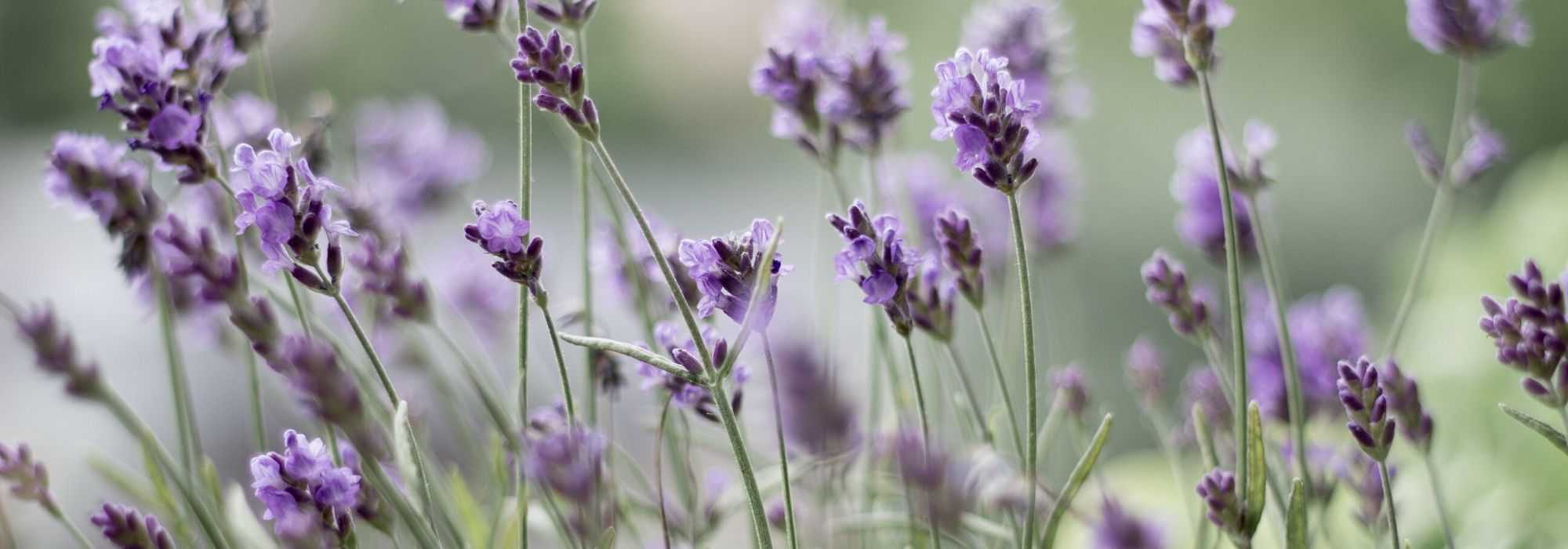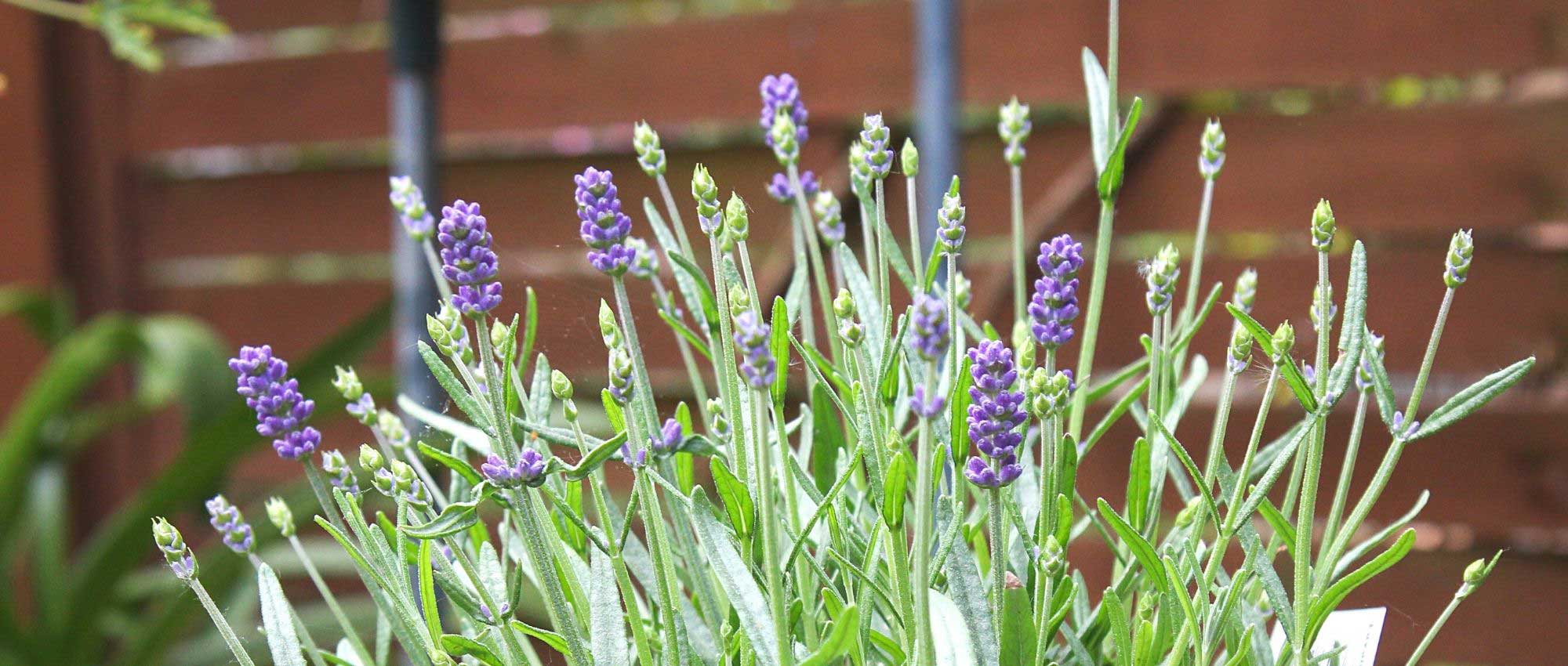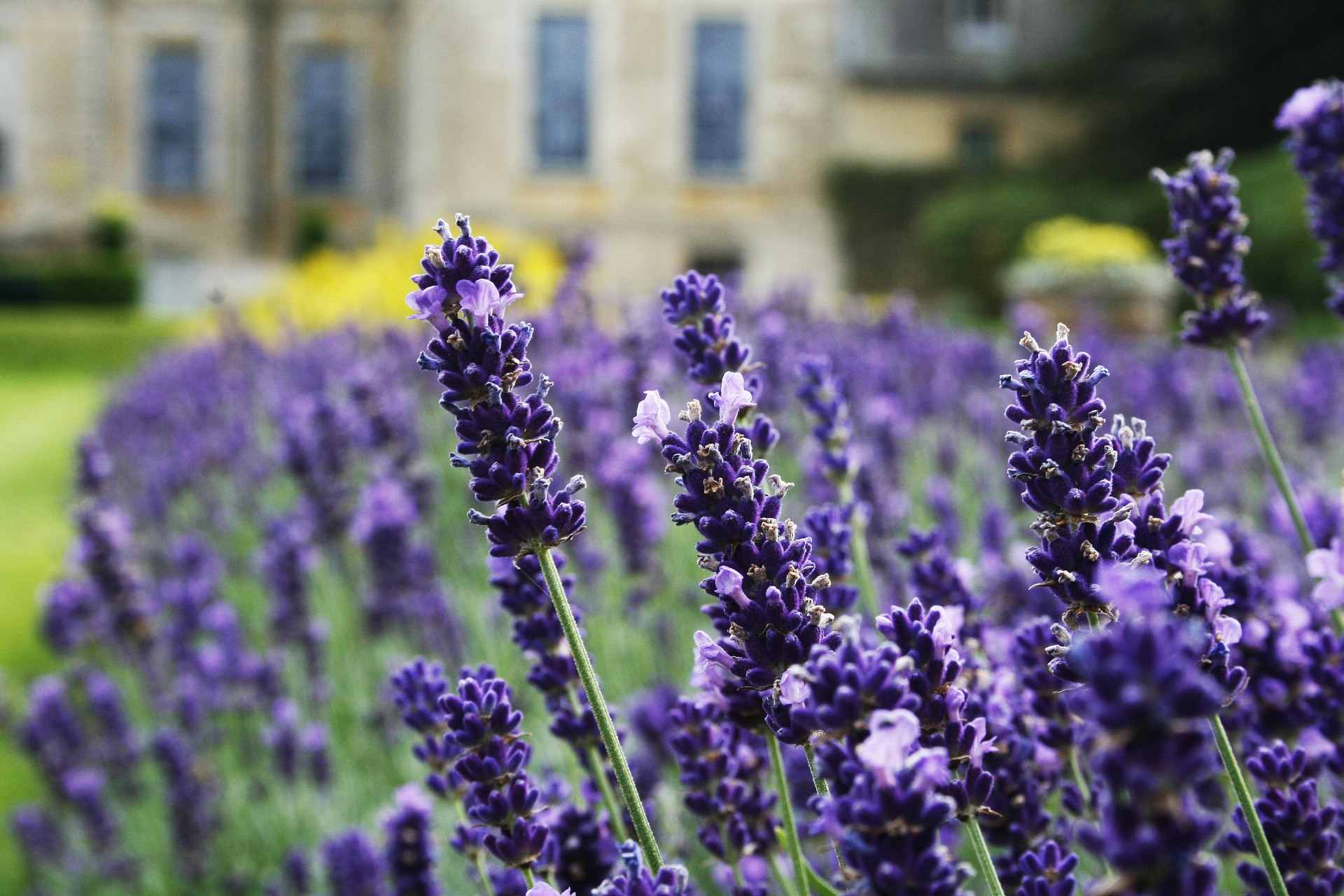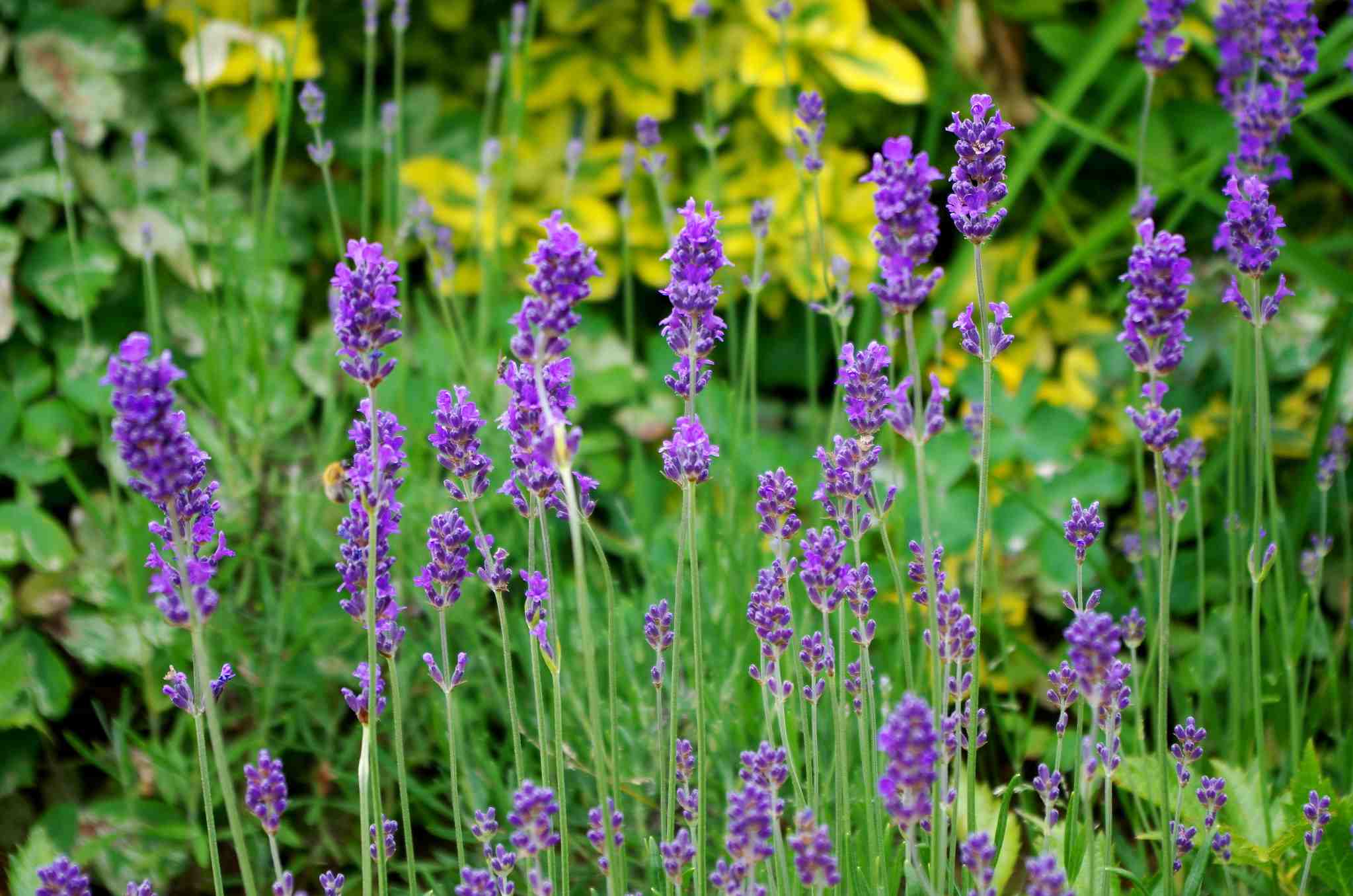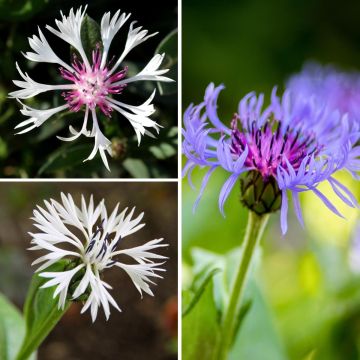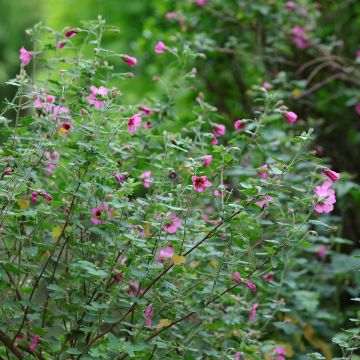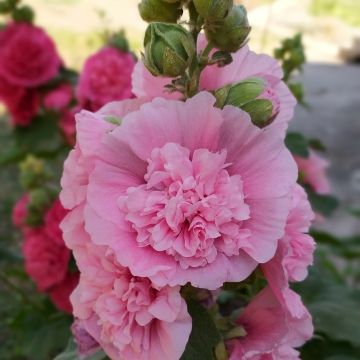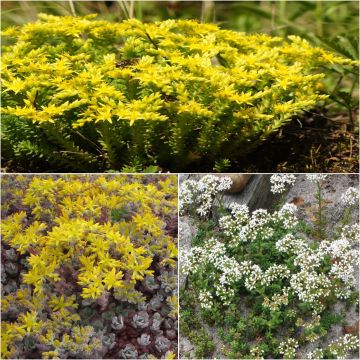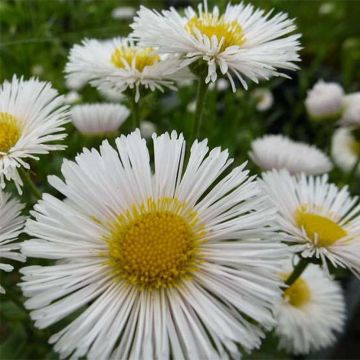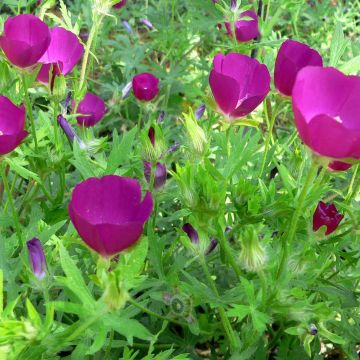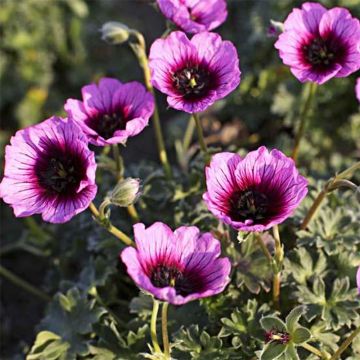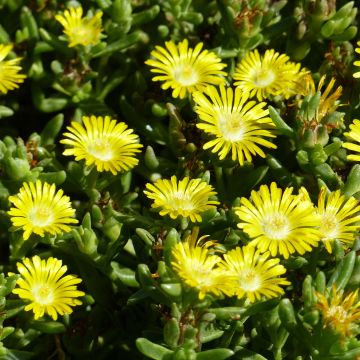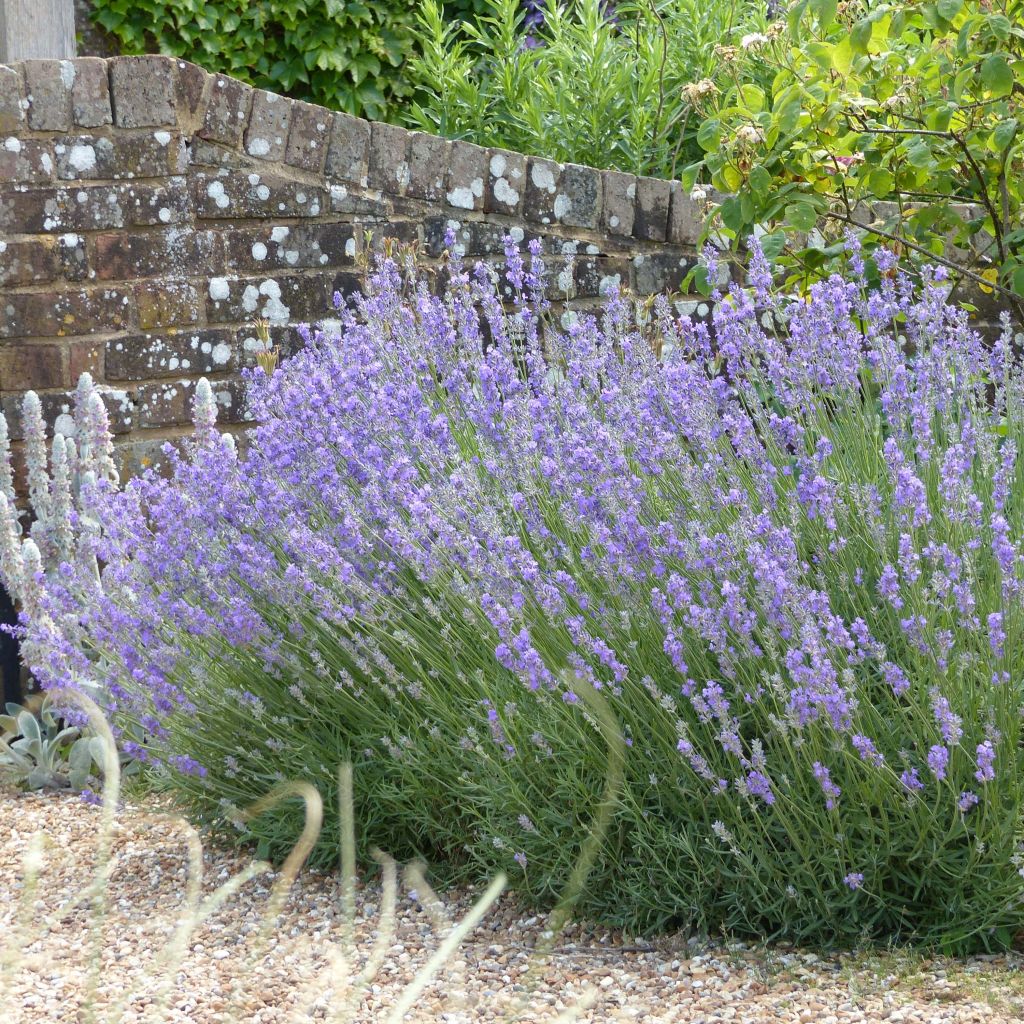

Lavandula angustifolia Munstead - True Lavender


Lavandula angustifolia Munstead - True Lavender
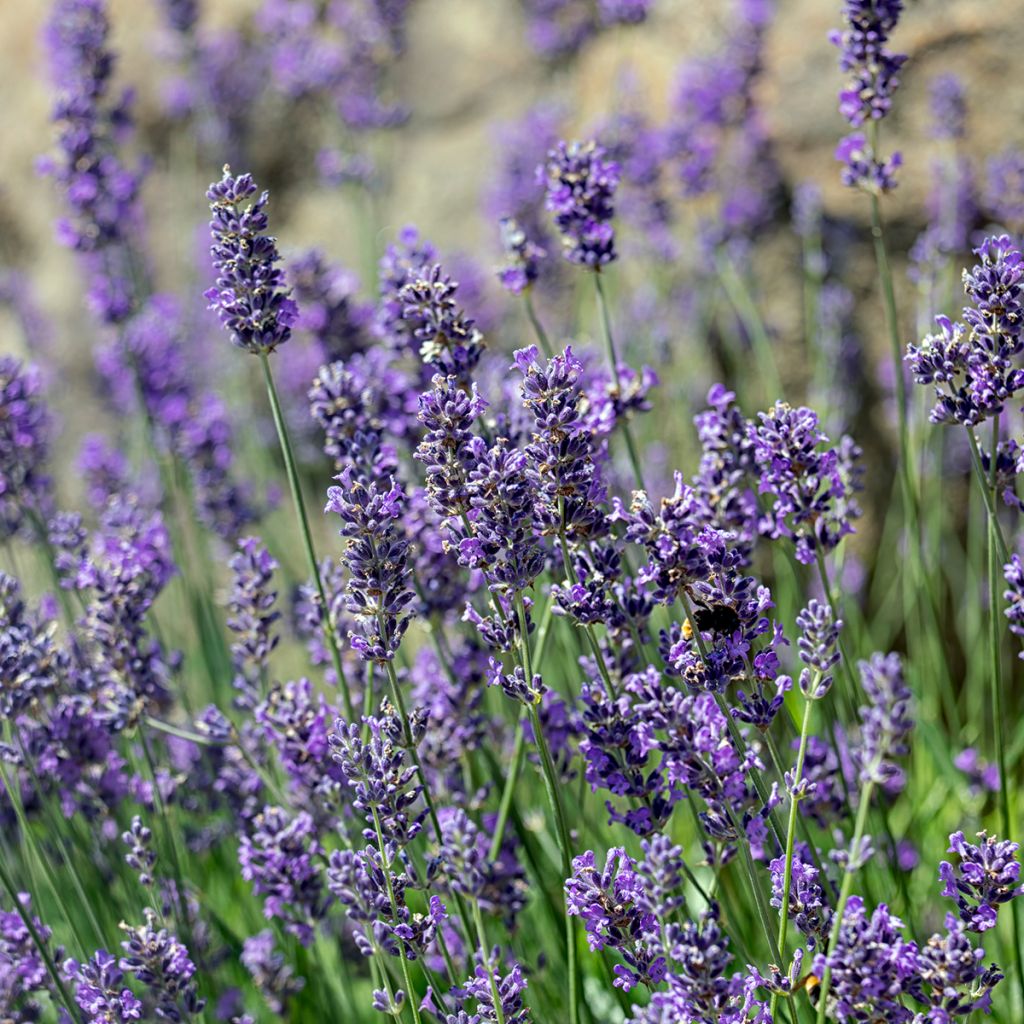

Lavandula angustifolia Munstead - True Lavender
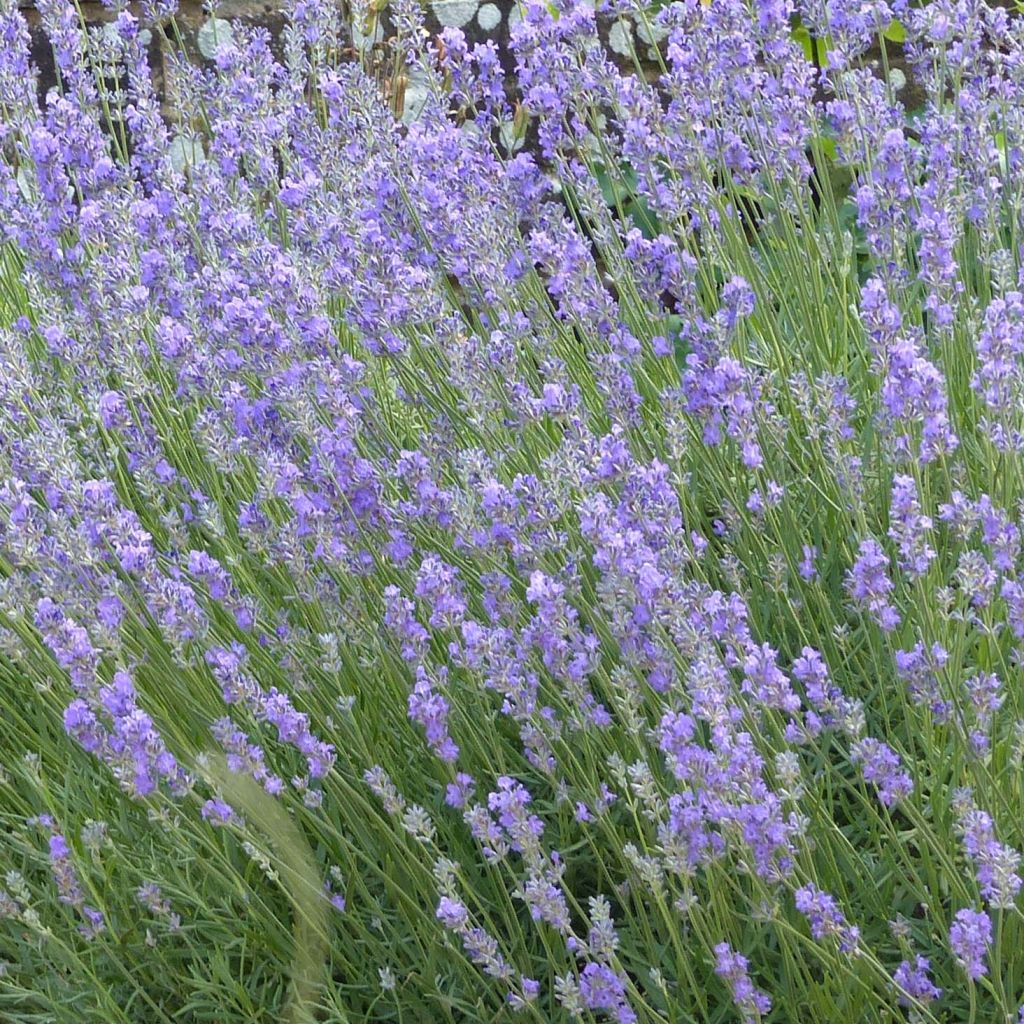

Lavandula angustifolia Munstead - True Lavender


Lavandula angustifolia Munstead - True Lavender
View more pictures
Hide images
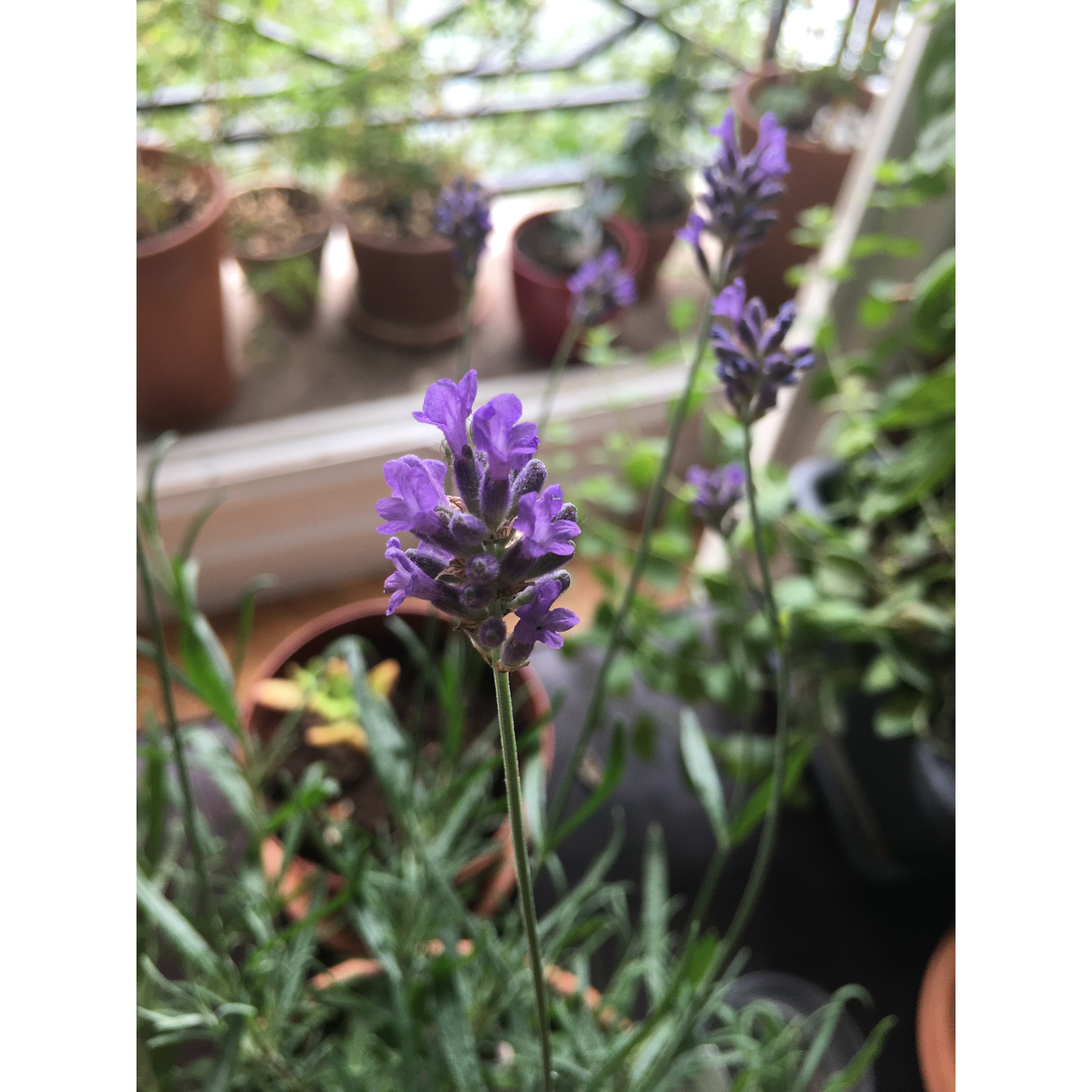
G T.

Lavender angustifolia Munstead
G T. • 75 FR
Lavandula angustifolia Munstead - True Lavender
Lavandula angustifolia Munstead
True Lavender, English lavender
I planted 10 last autumn on a slope exposed to the sun for a good part of the day, and they've all taken well. It promises a bit of flowering this year—I'm delighted!
Julie, 03/05/2025
Special offer!
Receive a €20 voucher for any order over €90 (excluding delivery costs, credit notes, and plastic-free options)!
1- Add your favorite plants to your cart.
2- Once you have reached €90, confirm your order (you can even choose the delivery date!).
3- As soon as your order is shipped, you will receive an email containing your voucher code, valid for 3 months (90 days).
Your voucher is unique and can only be used once, for any order with a minimum value of €20, excluding delivery costs.
Can be combined with other current offers, non-divisible and non-refundable.
Home or relay delivery (depending on size and destination)
Schedule delivery date,
and select date in basket
This plant carries a 12 months recovery warranty
More information
We guarantee the quality of our plants for a full growing cycle, and will replace at our expense any plant that fails to recover under normal climatic and planting conditions.

Would this plant suit my garden?
Set up your Plantfit profile →
Description
The Lavandula angustifolia 'Munstead' is an excellent variety of true lavender, compact, vigorous and easy to grow. It forms a regular, dense and aromatic ball, and comes alive in summer with spikes of very bright blue-violet flowers, emerging from evergreen foliage of an ash green. This small fragrant lavender that ages well, without thinning out, is also distinguished by a good lifespan. It will thrive in a well-drained soil, even very dry in summer, rocky, in full sun.
The Lavandula angustifolia, also known as English lavender, is a plant of the lamiaceae family related to sage, mint, thyme and rosemary. This subshrub is native to rather mountainous areas of the Mediterranean basin. The 'Munstead' variety, obtained in England around 1916, is named after the famous property Munstead Wood, ruled by the great lady of gardening Gertrude Jekyll. This variety forms a very rounded bush, of small size, about 50 cm (20in) in all directions, with a dense and vigorous habit. Its decorative foliage, more or less evergreen in winter, is composed of narrow and aromatic leaves of a soft grey-green, which will be even lighter if the summer is hot and the soil is dry. In summer, from June to August depending on the regions, this lavender is covered with a multitude of very fragrant purple flowers, carried in cylindrical spikes of 15-20 cm (6-8in) long, at the end of thin woody and leafy stems. This nectar-rich and honey-rich flowering is visited by pollinating insects.
As an ornamental and Mediterranean plant par excellence, lavender can be used in flower beds, rock gardens, pots, seaside, and even as a low flowering hedge or in large borders. With its graphic and wild appearance, the color of its foliage and flowers, there are infinite possibilities for the gardener. Lavender 'Munstead' can be associated with grasses like Stipa pennata or Stipa tenuifolia, which, with their tousled appearance, will contrast with its rounded shape and reproduce a harmonious association, often found in nature. It will also work wonders when associated with evening primroses, perennial flax, euphorbias, gauras, or landscape roses. It pairs well with Iris germanica and a small Provençal bindweed called Convolvulus althaeoides. You can also create beautiful pots to place on the terrace or balcony. It is also possible to mix several varieties of lavender together, creating an elegant tableau with a variety of flower and foliage colors, as well as plant size and volume.
Properties: Lavender contributes to the preservation of bees: the nectar of its flower attracts bees, making one of the most famous honeys. In Provence, the plant is distilled to obtain a highly sought-after essential oil in perfumery and aromatherapy. Its many therapeutic properties are still widely used: its essential oil has antiseptic, antispasmodic, healing, purifying, diuretic properties, etc.
Lavandula angustifolia Munstead - True Lavender in pictures


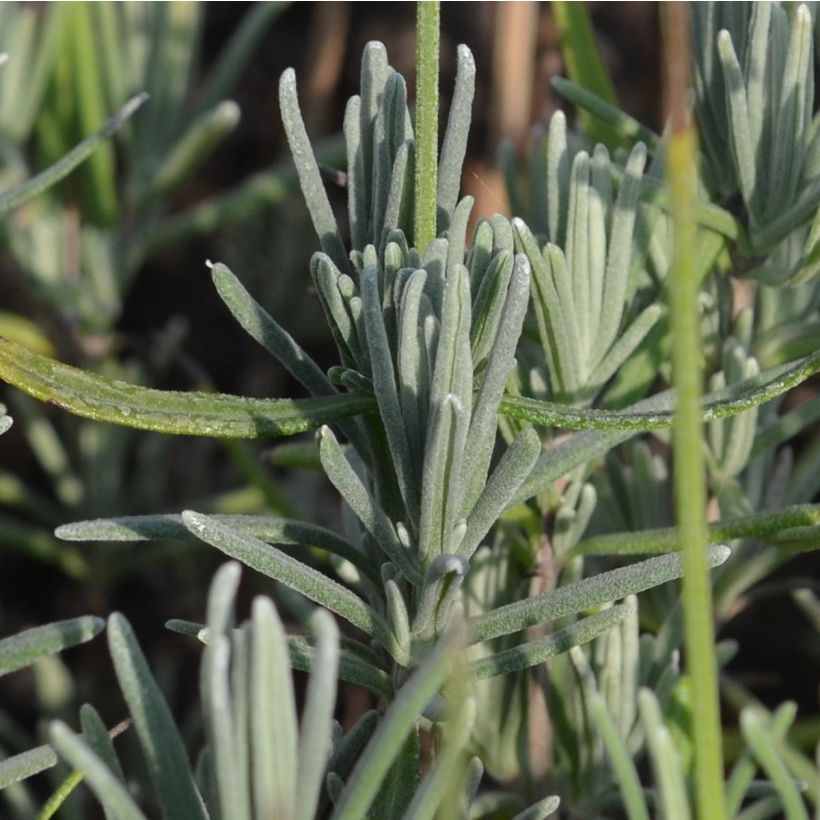

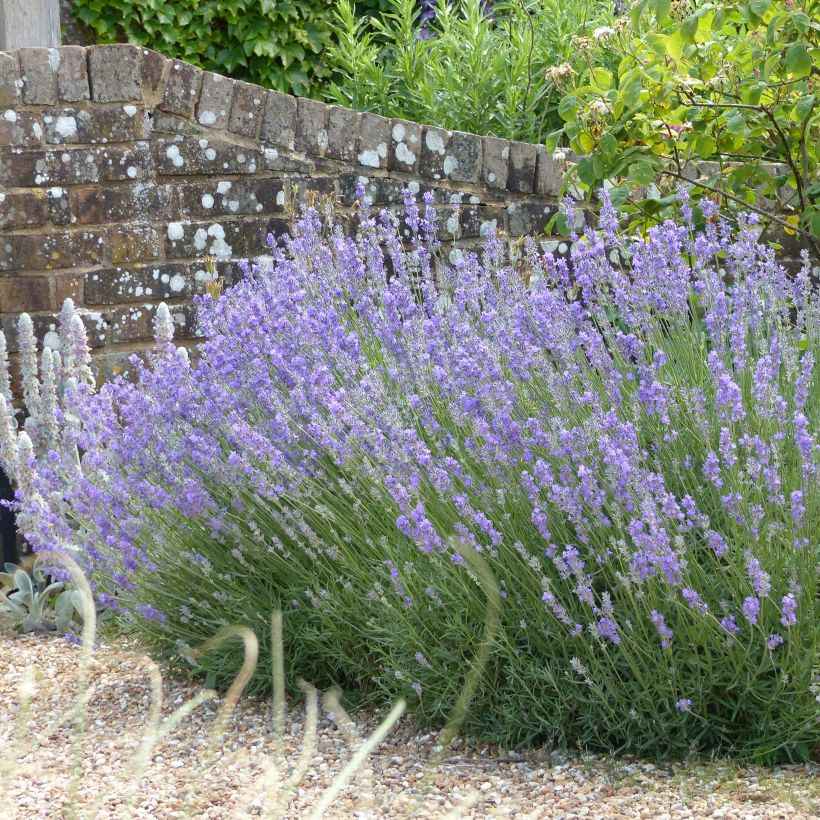

Flowering
Foliage
Plant habit
Botanical data
Lavandula
angustifolia
Munstead
Lamiaceae
True Lavender, English lavender
Cultivar or hybrid
Other Lavendula - Lavender
View all →Planting and care
In nature, lavenders and lavandins always live in poor and rocky, dry, perfectly drained environments. Lavandula angustifolia tolerates limestone soils perfectly. These plants detest summer watering, which makes them sick and causes them to disappear, as they are very sensitive to fungal diseases induced by the combination of heat and humidity. In winter, they imperatively need perfect drainage, and in summer, they need to be kept dry. Lavender will age better in poor soil, as its growth will be slower, and it will be less prone to thinning out from the base. To limit this phenomenon, it is necessary to prune, from a young age, after flowering or in autumn, just above the first buds that can be seen on the wood. Lavenders and lavandins never regrow on old wood. The clump will thus branch out more and more, remaining compact, eventually forming beautiful round and dense cushions. At planting, give them what they like: gravel, stones, coarse sand, but definitely no potting soil or fertilizer.
Planting period
Intended location
Care
Planting & care advice
-
, onOrder confirmed
Reply from on Promesse de fleurs
Similar products
Haven't found what you were looking for?
Hardiness is the lowest winter temperature a plant can endure without suffering serious damage or even dying. However, hardiness is affected by location (a sheltered area, such as a patio), protection (winter cover) and soil type (hardiness is improved by well-drained soil).

Photo Sharing Terms & Conditions
In order to encourage gardeners to interact and share their experiences, Promesse de fleurs offers various media enabling content to be uploaded onto its Site - in particular via the ‘Photo sharing’ module.
The User agrees to refrain from:
- Posting any content that is illegal, prejudicial, insulting, racist, inciteful to hatred, revisionist, contrary to public decency, that infringes on privacy or on the privacy rights of third parties, in particular the publicity rights of persons and goods, intellectual property rights, or the right to privacy.
- Submitting content on behalf of a third party;
- Impersonate the identity of a third party and/or publish any personal information about a third party;
In general, the User undertakes to refrain from any unethical behaviour.
All Content (in particular text, comments, files, images, photos, videos, creative works, etc.), which may be subject to property or intellectual property rights, image or other private rights, shall remain the property of the User, subject to the limited rights granted by the terms of the licence granted by Promesse de fleurs as stated below. Users are at liberty to publish or not to publish such Content on the Site, notably via the ‘Photo Sharing’ facility, and accept that this Content shall be made public and freely accessible, notably on the Internet.
Users further acknowledge, undertake to have ,and guarantee that they hold all necessary rights and permissions to publish such material on the Site, in particular with regard to the legislation in force pertaining to any privacy, property, intellectual property, image, or contractual rights, or rights of any other nature. By publishing such Content on the Site, Users acknowledge accepting full liability as publishers of the Content within the meaning of the law, and grant Promesse de fleurs, free of charge, an inclusive, worldwide licence for the said Content for the entire duration of its publication, including all reproduction, representation, up/downloading, displaying, performing, transmission, and storage rights.
Users also grant permission for their name to be linked to the Content and accept that this link may not always be made available.
By engaging in posting material, Users consent to their Content becoming automatically accessible on the Internet, in particular on other sites and/or blogs and/or web pages of the Promesse de fleurs site, including in particular social pages and the Promesse de fleurs catalogue.
Users may secure the removal of entrusted content free of charge by issuing a simple request via our contact form.
The flowering period indicated on our website applies to countries and regions located in USDA zone 8 (France, the United Kingdom, Ireland, the Netherlands, etc.)
It will vary according to where you live:
- In zones 9 to 10 (Italy, Spain, Greece, etc.), flowering will occur about 2 to 4 weeks earlier.
- In zones 6 to 7 (Germany, Poland, Slovenia, and lower mountainous regions), flowering will be delayed by 2 to 3 weeks.
- In zone 5 (Central Europe, Scandinavia), blooming will be delayed by 3 to 5 weeks.
In temperate climates, pruning of spring-flowering shrubs (forsythia, spireas, etc.) should be done just after flowering.
Pruning of summer-flowering shrubs (Indian Lilac, Perovskia, etc.) can be done in winter or spring.
In cold regions as well as with frost-sensitive plants, avoid pruning too early when severe frosts may still occur.
The planting period indicated on our website applies to countries and regions located in USDA zone 8 (France, United Kingdom, Ireland, Netherlands).
It will vary according to where you live:
- In Mediterranean zones (Marseille, Madrid, Milan, etc.), autumn and winter are the best planting periods.
- In continental zones (Strasbourg, Munich, Vienna, etc.), delay planting by 2 to 3 weeks in spring and bring it forward by 2 to 4 weeks in autumn.
- In mountainous regions (the Alps, Pyrenees, Carpathians, etc.), it is best to plant in late spring (May-June) or late summer (August-September).
The harvesting period indicated on our website applies to countries and regions in USDA zone 8 (France, England, Ireland, the Netherlands).
In colder areas (Scandinavia, Poland, Austria...) fruit and vegetable harvests are likely to be delayed by 3-4 weeks.
In warmer areas (Italy, Spain, Greece, etc.), harvesting will probably take place earlier, depending on weather conditions.
The sowing periods indicated on our website apply to countries and regions within USDA Zone 8 (France, UK, Ireland, Netherlands).
In colder areas (Scandinavia, Poland, Austria...), delay any outdoor sowing by 3-4 weeks, or sow under glass.
In warmer climes (Italy, Spain, Greece, etc.), bring outdoor sowing forward by a few weeks.






























